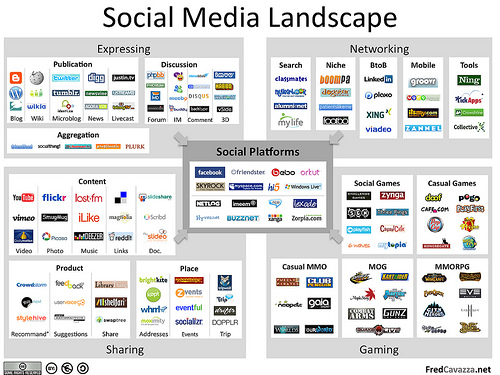When I woke up this morning, I grabbed my smartphone and made a quick sweep through my top social platforms. After firing up Snapchat, suddenly, I saw the India Kite Festival—not through a news story or an Instagram photo, but from the point of view of participants. I watched about twenty different 15-30 second videos from all over India. They were filming and sharing (in real time!) their own personal experiences.
I realized then that this is what social media can look like in the 21st century: a firsthand look at culture. Social media is no longer just about people communicating with people. Rather, social media is about the spread of ideas. It’s about the cultivation and sharing of culture.
In social media, you cannot simply be information-savvy and a wordsmith (though those qualities are important). A social media marketer needs cultural insight and empathy — they need to be curious about human experience and willing to study it.
The recent Target snafu is a perfect example of why brands can’t forget the social aspect of marketing. Not too long ago, Target decided to spread its franchise to Canada. Almost immediately, it failed,costing Target around $2 billion. Why did it fail? Because Target forgot about one key factor: the consumer.
Target mistakenly assumed that because Canadian and American lifestyles are fairly similar, the habits of their consumers were also parallel. So instead of investing in research of Canadian consumer experience, Target deployed the same exact marketing strategy as they do in the U.S.—and it didn’t work.
Businesses that understand, and more importantly utilize, the social aspect of social media are seeing a lot of success. Take, for example, the fitness clothing brand Lululemon. $108 yoga pants might seem laughable to most, but for women across America, that price doesn’t sound too unreasonable—as long as it has the Lululemon logo, of course. How did they do it? Well, they didn’t use social media to just engage with their target market. Instead, they used social media to create a community in a previously untapped market—a common ground for women who practice yoga and exercise regularly.
The success of Lululemon is not so much due to their product (though they are among the first to create stylish athletic gear for women) as it is due to the entire culture they’ve created. If you look at their Twitter, Instagram and website, it’s quite clear who their target market is: the yoga-practicing, fashion-conscious woman. Instead of just communicating and engaging with this target market, they push an “experience” out on all their social platforms. They post ideas, tips and photos that these women will find not only valuable, but also similar to their own practices. When you purchase Lululemon clothing, you are considered part of a “cult following.” It is an entire brand formed around a specific human experience, and they use social media to build that culture.
Most people see the value in viewing social media as a cultural experience for B2C brands, but it’s just as important for B2B brands to remember this social side of marketing. Essentially, B2B is still all about human interactions. A B2B business needs to research and understand their target market (which is run by humans) in order to successfully reach them. And all brands need to know their social value in order to market themselves.
Nowadays, social media encompasses much more than the new age media in digital form. It has grown to be more than a place for conversation. Rather, users turn to social platforms to participate in a culture they feel they are a part of. They want to share ideas and values with likeminded individuals—including brands. Make sure your social media strategy models your company culture, and that it is being reproduced across your social platforms. That way, your culture can attain members beyond your office walls.
Image credit: CC by IvanWalsh.com




